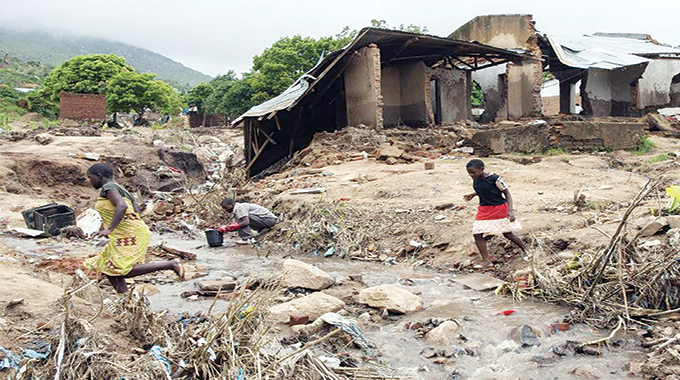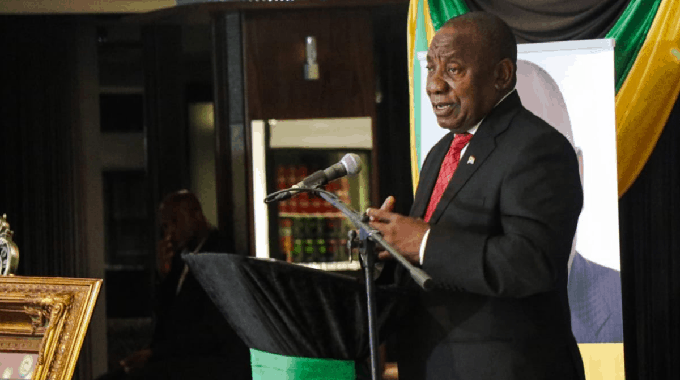The villages in Malawi that prepared for the floods – and survived

Simon Allison in Ndamera and Chikala
Part 2
Continued from Saturday
Thaundi is not the only village to notice the new weather extremes. All across the southern Malawi wetlands, communities are making plans to deal with what is swiftly becoming the new normal.
In Chikala village, also on the west bank of the Shire River, very near the border with Mozambique, memories of the last great flood are fresh. It was only four years ago, in 2015, and ten people from the village were killed. Markson Beka remembers it well: the waters rose at night, and it was chaos as people ran around in panic, not knowing what to do or where to go.
This time, when the floods came, the village reacted totally differently. Despite 1 799 households in Chikala and the surrounding area being affected, there were no casualties. Not one. “It’s because of the awareness we created. We told people to move in time. We had a plan,” said Beka.
Beka is the chairperson of the area’s Village Civil Protection Committee, a body established by the government in 2009. The committee is composed of representatives from 45 nearby villages, and receives irregular disaster-management training from the government.
The committee learned from the mistakes made in 2015, and put in place procedures to prepare for the next disaster, and to mitigate its impact.
The first step was to train residents to recognise the warning signs. “When we see more ants, that is a sign that more rains are coming. When we have continuous days of rain, then we can expect a flood,” said Beka.
Next the committee created assembly points on higher ground, so that people would know exactly where to go when they sensed trouble. This is not an option for all villages, but Chikala is lucky in that it is relatively hilly, and some areas are safe from floods.
The committee toured around all the low-lying settlements to ensure that everyone knew what to do when disaster struck.
When the floods did come, the response was calm and orderly. Brains Kamanula, a 54-year-old community health worker with Doctors Without Borders (MSF) who lived through the 2015 floods, said that the committee’s meticulous preparations made all the difference. “When the water came, they [community leaders] could not allow people to run around. They said come together in a single point and they looked where the water is going. They had whistles. Some climbed into a tree to check the direction of the water.”
The significance of the whistles cannot be overstated, he said. Not only does the whistle serve as an alarm bell, it also allowed committee members to easily direct nervous crowds to places of safety. Again, in an emergency, it is the smallest details that can make the difference between life and death.
“The communities are prepared. The government implemented the village civil protection committees, which are very important. In each village, there is one or two members. Their preparedness for disaster is better because they were trained. The community has points that have already been chosen and everybody knows where to go.”
Enelisi Wiseman was among those affected. When the whistles sounded, her and her family knew what to do. “When the disaster happened we were in our village. We then moved into the primary school.” Several days later, the village headman allocated land for her and 114 other households to construct temporary accommodation while they wait for the flood waters to recede. The new accommodation is already being built: reed huts to replace the clay-brick houses.
Around the village, at least in the areas where the waters have receded, the ruins of the houses that were destroyed are obvious in the collapsed walls and the piles of tumbled-down bricks; and in the patches of bare earth where even foundation stones were ripped from the ground.
The first thing Wiseman’s displaced community did was to construct two temporary toilets, one for men and one for women and children. When Kamanula arrived on the scene, and saw what they had built, he could not contain his pride. “All the awareness on hygiene and sanitation that MSF has been doing, it is really working,” he said.
Food remains a problem, however. The area is accessible only by boat, which makes it hard for humanitarian organisations to get there. Everyone’s crops have been decimated by the storms and the floods, and what little is left is being strictly rationed.
It could be several months until Wiseman and her family return home. When they get there she will have to start again from scratch. She knows that hers is not a sustainable lifestyle in the long-term, that something has to change. “We have a tentative solution that we have discussed amongst ourselves,” she said. “We are desperate so we will go back and build temporary houses and go and plant our crops. After we harvest, we will go and ask the chief if we can have some land somewhere higher up.” This time she escaped with her life, and she doesn’t want to have to do it again. – Mail and Guardian (SA)










Comments